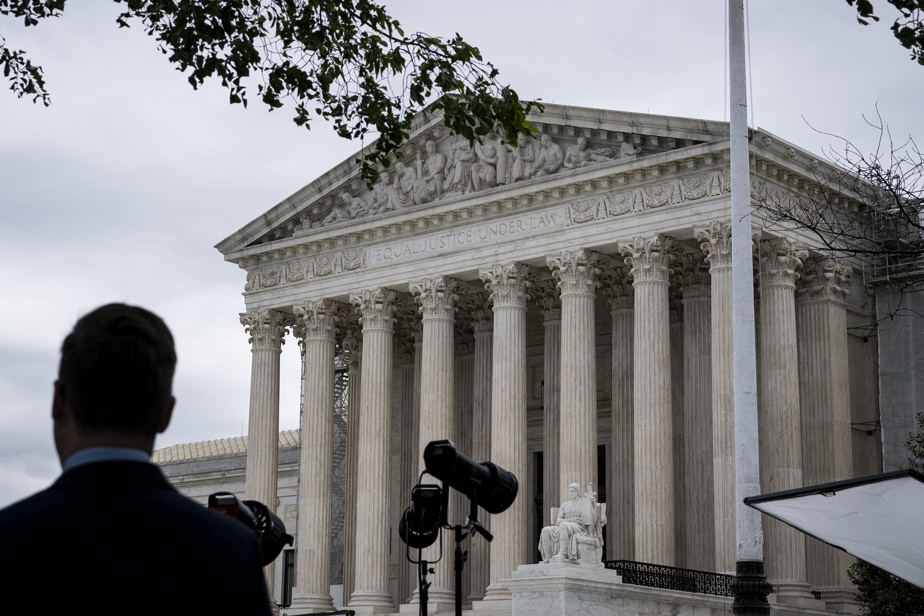(Washington) The U.S. Supreme Court on Friday upheld the constitutionality of disarming people who pose “a credible threat to the physical safety of others,” in a decision on domestic violence perpetrators, clarifying its recent jurisprudence on gun ownership.
By eight votes to one, the judges overturn an appeal decision which had declared as unconstitutional a federal law prohibiting people subject to a removal order for domestic violence from possessing a weapon.
“When a court has found that an individual presents a credible threat to the physical safety of others, that individual may be temporarily disarmed” without violation of the Second Amendment of the Constitution guaranteeing the right to bear arms, concludes on behalf of majority the President of the Court, John Roberts.
“When a court has found that an individual presents a credible threat to the physical safety of others, that individual may be temporarily disarmed” without violation of the Second Amendment of the Constitution guaranteeing the right to bear arms, concludes on behalf of majority the President of the Court, John Roberts.
It was the first time that the Supreme Court had considered this particularly sensitive issue for American society since its controversial decision in June 2022, proclaiming the right of citizens to carry a weapon outside their homes.
In the reasons for this decision voted by the six conservative judges against the opinion of their three progressive colleagues, the dean, Clarence Thomas, explained that the Court would now only authorize “reasonable” exceptions to the Second Amendment, notably in “ sensitive places”.
It is up to the courts to determine whether these restrictions are consistent with precedents in the “history and traditions of the United States” between the late 18th and 19th centuries.
On the basis of this new case law, an ultraconservative federal appeals court concluded in 2023 that a federal law was unconstitutional, due to failure to identify historical precedents.
In this case, in Texas (South), the police found a pistol and a rifle during a search of the home of a suspect involved in five shootings in two months and subject to a removal order, Zackey Rahimi, sentenced to prison under this law.
“Some courts have misunderstood the methodology of our recent Second Amendment decisions,” Justice Roberts wrote, specifying that the required precedents should not be interpreted as “a statute written in stone.”
He criticizes the appeal judges in particular for having looked in the past not for “a historical analogue” to the contested legislation, but for a “sister” text.
Judge Thomas, the only one to have voted against, for lack of any comparable historical precedent, deplores that Friday’s decision, “in order to ensure that the government can regulate a part of society, endangers Second Amendment rights of many more people.”
The Everytown association, which campaigns for strengthening control of individual weapons, welcomed “a decision that will save lives”, highlighting the links between domestic and firearm violence.
Influential Democratic Senator Dick Durbin, head of the Judiciary Committee, also welcomed this decision in a press release.
“But the only reason this case made it to the Court is because two years ago, a conservative supermajority of judicial activists established a radical new standard that makes it much easier for the gun lobby to challenge long-standing gun control laws,” he said, urging the Court to reverse its June 2022 jurisprudence.
During the debates in November, the Biden administration’s legal adviser, Elizabeth Prelogar, alerted the Supreme Court to “the destabilizing consequences of the erroneous interpretation of its decision in the lower courts”, citing cases of drug traffickers or of robbers convicted multiple times and allowed to keep a weapon.
“This case offers an opportunity for the Court to clarify” its position, argued Ms. Prelogar.




